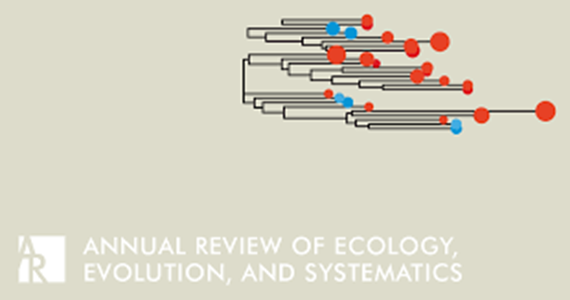工厂沟通
IF 11.2
1区 生物学
Q1 ECOLOGY
Annual Review of Ecology, Evolution, and Systematics
Pub Date : 2021-08-10
DOI:10.1146/annurev-ecolsys-010421-020045
引用次数: 19
摘要
当发送者发出被接收者感知到的改变接收者行为的提示时,通信就发生了。植物感知光、水、其他营养物质、触摸、食草动物、病原体、菌根和固氮细菌等信息。植物也会发出被其他植物、有益微生物、食草动物、食草动物的敌人、传粉者和种子传播者感知的信号。对光线有反应的个体的适应性增强了。对涉及食草动物和病原体的线索作出反应的益处的证据更为有限。发出信号的好处也不太清楚,特别是对于植物间的交流。依赖于多种或剂量依赖的线索可以减少不适当的反应,植物通常会记住过去的线索。植物有多种需求,并优先考虑相互冲突的线索,因此非生物胁迫的风险被视为大于遮阳的风险,而遮阳的风险又被视为大于消耗的风险。植物可以区分自我与非我,亲属与陌生人。他们可以识别竞争对手或消费者的种类,并作出适当的反应。涉及互惠者的线索通常包含高度具体的信息。预计《生态、进化和分类学年度评论》第52卷的最终在线出版日期为2021年11月。修订后的估计数请参阅http://www.annualreviews.org/page/journal/pubdates。本文章由计算机程序翻译,如有差异,请以英文原文为准。
Plant Communication
Communication occurs when a sender emits a cue perceived by a receiver that changes the receiver's behavior. Plants perceive information regarding light, water, other nutrients, touch, herbivores, pathogens, mycorrhizae, and nitrogen-fixing bacteria. Plants also emit cues perceived by other plants, beneficial microbes, herbivores, enemies of herbivores, pollinators, and seed dispersers. Individuals responding to light cues experienced increased fitness. Evidence for benefits of responding to cues involving herbivores and pathogens is more limited. The benefits of emitting cues are also less clear, particularly for plant–plant communication. Reliance on multiple or dosage-dependent cues can reduce inappropriate responses, and plants often remember past cues. Plants have multiple needs and prioritize conflicting cues such that the risk of abiotic stress is treated as greater than that of shading, which is in turn treated as greater than that of consumption. Plants can distinguish self from nonself and kin from strangers. They can identify the species of competitor or consumer and respond appropriately. Cues involving mutualists often contain highly specific information. Expected final online publication date for the Annual Review of Ecology, Evolution, and Systematics, Volume 52 is November 2021. Please see http://www.annualreviews.org/page/journal/pubdates for revised estimates.
求助全文
通过发布文献求助,成功后即可免费获取论文全文。
去求助
来源期刊
CiteScore
19.90
自引率
1.70%
发文量
21
期刊介绍:
The Annual Review of Ecology, Evolution, and Systematics is a scholarly publication that has been in circulation since 1970. It focuses on important advancements in the areas of ecology, evolutionary biology, and systematics, with relevance to all forms of life on Earth. The journal features essay reviews that encompass various topics such as phylogeny, speciation, molecular evolution, behavior, evolutionary physiology, population dynamics, ecosystem processes, and applications in invasion biology, conservation, and environmental management. Recently, the current volume of the journal transitioned from a subscription-based model to open access through the Annual Reviews' Subscribe to Open program. Consequently, all articles published in the current volume are now available under a CC BY license.

 求助内容:
求助内容: 应助结果提醒方式:
应助结果提醒方式:


